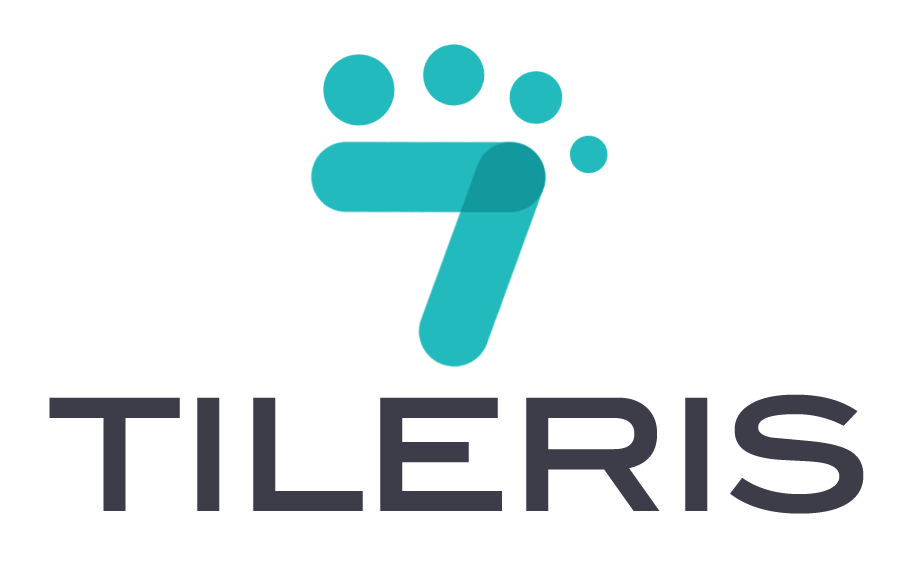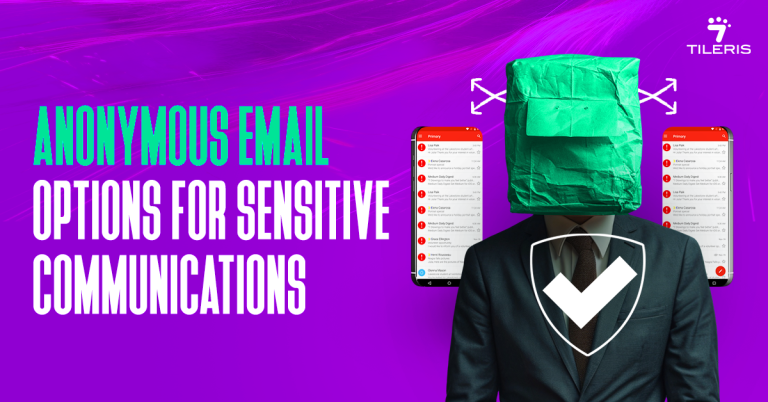Best Email Security Software 2025: Top Solutions Compared
Introduction
Navigating the digital world in 2025 feels a bit like being in a constant dodgeball game. And when it comes to email, the stakes are higher than ever.
Gone are the days when a quick glance for a misspelling or awkward grammar would save you from a phishing scam. Today, thanks to the rapid evolution of AI, cybercriminals are crafting emails so sophisticated, so convincing, they could fool even the most vigilant among us.
It’s not just about protecting your inbox anymore; it’s about safeguarding your entire business from threats that are evolving at warp speed.
“We’ve seen a staggering rise in AI-powered phishing and business email compromise (BEC) attempts,” notes Sarah Chen, a leading cybersecurity analyst. “Attackers are using generative AI to create perfectly worded emails, deepfakes for impersonation, and even voice cloning to manipulate employees.
It’s a game-changer, and businesses need to adapt fast.” Indeed, reports suggest that phishing remains the number one vector for data breaches, and with AI in the mix, that trend is only set to intensify.
So, how do you stay ahead when the bad guys are getting smarter? The answer lies in smart, adaptive, and AI-powered email security. This isn’t just a luxury anymore; it’s a fundamental necessity.
In this article, we’re going to dive into the top email security solutions for 2025, comparing their strengths and weaknesses, and helping you figure out which one is the right fit to fortify your defenses.

What to Look for in 2025
Before we compare the contenders, let’s talk about what truly matters in email security right now. Forget basic spam filters; we’re talking about advanced warfare.
AI at the Core
This is paramount. Your email security absolutely must leverage AI and machine learning to detect those hyper-realistic phishing emails, spot subtle behavioral anomalies that indicate a BEC attempt, and predict new threats before they even become widespread.
Beyond the Gateway
Traditional email gateways are still important, but today’s threats often bypass them entirely. You need solutions that work inside your email platform (like Microsoft 365 or Google Workspace), offering post-delivery protection and rapid remediation.
Holistic Defense
Email is just one piece of the puzzle. Look for platforms that integrate with your broader security ecosystem, think identity management, endpoint protection, and security awareness training.
User Empowerment
Even with the best tech, humans are often the weakest link. Solutions that actively engage and educate users through phishing simulations and real-time alerts are invaluable.
Top Email Security Solutions Compared
Alright, Having had that settled, let’s talk about the players making waves in 2025.
1. Proofpoint
Proofpoint has long been a titan in the email security space, and they continue to innovate by focusing on the human element, the primary target for most advanced attacks. They’re all about understanding who your vulnerable users are and tailoring protection accordingly.
Why we like it: Proofpoint’s strength lies in its sophisticated AI and machine learning, particularly with their Targeted Attack Protection (TAP) module. It’s incredibly effective at catching those elusive phishing attempts, business email compromises, and even zero-day malware embedded in attachments.
They’re great at identifying VIPs and high-risk employees, then applying extra layers of scrutiny to emails targeting them.
Their threat intelligence is top-notch, keeping you ahead of emerging attack campaigns. Plus, their comprehensive data loss prevention (DLP) features are a huge bonus for sensitive data.
Considerations: While incredibly powerful, Proofpoint can sometimes feel a bit complex to manage, especially for smaller teams without dedicated security personnel. The cost can also be on the higher side, reflecting its enterprise-grade capabilities. Some users have noted that while detection is excellent, the granular customization can require a deeper dive into the platform.
2. Mimecast
Mimecast has built a reputation for providing a truly comprehensive email management suite, combining robust security with essential archiving and continuity features. For organizations that need a unified solution, Mimecast is a compelling choice.
Why we like it: Mimecast excels in its multi-layered approach, offering strong anti-phishing, anti-ransomware, and impersonation protection. Their URL rewriting and attachment sandboxing are highly effective at neutralizing threats.
What truly sets Mimecast apart for many is its superior email archiving and continuity capabilities.
If your email server goes down, Mimecast can keep your business communications flowing, which is a massive relief during a crisis. Users often praise its easy administration and good reporting.
Considerations: Similar to Proofpoint, Mimecast can come with a significant price tag, especially when you start adding on all the advanced features.
While its archiving and continuity are excellent, some argue that its core security features, while strong, might not always be as cutting-edge in pure AI-driven threat detection as some of the newer, specialized AI-first players.
3. Barracuda
Barracuda has made a strong play in the cloud-first security space, offering a more streamlined and often more budget-friendly option that doesn’t compromise on essential protection. They’re particularly popular with organizations heavily invested in Microsoft 365.
Why we like it: Barracuda Email Protection brings a solid suite of defenses, including AI-based threat detection, strong spam filtering, and advanced threat protection against phishing and ransomware.
Many users appreciate its ease of deployment and intuitive interface, making it a good choice for businesses that want robust security without overwhelming complexity.
Their integration with Microsoft 365 is particularly seamless, and their email continuity features are a definite plus.
Considerations: This solution tends to be less robust for non-Microsoft environments, performing best with Exchange or Outlook. Its encryption options are also somewhat limited compared to some competitors. It’s best suited for mid-sized companies looking for strong, AI-driven phishing protection without the added complexity of enterprise-level solutions.
4. Microsoft Defender for Office 365 (MDO)
If your organization lives and breathes Microsoft 365, then Microsoft Defender for Office 365 (formerly Advanced Threat Protection) is often the first solution considered. Its native integration is its superpower.
Why we like it: The sheer ease of integration is a huge advantage here. MDO is built right into your Microsoft 365 environment, offering features like Safe Attachments (sandboxing), Safe Links (URL protection), and powerful anti-phishing policies.
It leverages Microsoft’s vast threat intelligence network, and for organizations already paying for higher-tier M365 licenses, it represents excellent value.
The “Threat Explorer” tool provides good visibility into detected threats and helps with incident response. It’s often praised for its seamless user experience and automated remediation capabilities.
Considerations: While MDO has come a long way, some cybersecurity professionals argue that it might not always catch the absolute bleeding edge of highly sophisticated, AI-generated phishing and BEC attacks as effectively as a dedicated third-party solution.
It’s a fantastic baseline and often sufficient for many, but for organizations with a very high-risk profile or specific compliance needs, augmenting it with another layer might be considered. Some advanced features might require a deeper understanding of the Microsoft security ecosystem.
5. Abnormal Security
Abnormal Security has emerged as a disruptive force, taking a truly behavioral AI approach to email security. They focus intensely on understanding “normal” email patterns and user behavior to spot anomalies that signal advanced attacks, particularly BEC.
Why we like it: Abnormal’s strength is its unparalleled ability to detect sophisticated BEC attacks and vendor email compromise (VEC).
They don’t rely on traditional rules or signatures; instead, their AI analyzes subtle cues in email content, sender behavior, and recipient interactions to identify malicious intent. They integrate directly with your email API, allowing them to act on emails after they’ve landed in an inbox, which is crucial for modern threats.
Considerations: Because Abnormal Security is so specialized in behavioral AI, it might not offer the same breadth of traditional email gateway features (like deep archiving or granular spam filtering) as some of the more all-encompassing solutions. It’s an excellent addition for organizations struggling with BEC, but it might work best as an overlay to an existing foundational email security solution. Also, as a cutting-edge solution, its pricing can be premium.
6. IRONSCALES
IRONSCALES takes a unique approach, blending AI-driven automation with human security analysts to combat email threats. They believe the best defense combines the speed of AI with the nuanced understanding of human experts.
Why we like it: IRONSCALES is particularly strong in its anti-phishing capabilities, especially against impersonation and BEC attacks. Their AI identifies suspicious emails, but what’s really neat is their “human verified” threat intelligence network, where security analysts can confirm and enrich threat data.
This combination helps reduce false positives and provides quick, accurate remediation. They also offer strong phishing awareness training and simulation tools, helping to educate your users.
Considerations: While the human-AI hybrid is a strength, it also means there’s a reliance on that human element, which might affect scalability or response times in certain scenarios compared to fully automated systems.
Making Your Choice
Choosing the “best” email security software in 2025 isn’t about picking a single winner in a boxing match. It’s about finding the right shield for your specific digital battleground.
For Enterprise
If you’re a large organization with complex needs, a multi-layered approach often works best. Solutions like Proofpoint or Mimecast provide that robust, all-encompassing defense, potentially augmented by specialized AI platforms like Abnormal Security if BEC is a significant concern.
The Microsoft 365 Natives
Microsoft Defender for Office 365 is your natural starting point. Its deep integration makes it incredibly efficient. However, consider if your risk profile demands the extra edge from a solution like Abnormal Security or IRONSCALES to catch those super-sophisticated, AI-generated attacks that might slip past native filters.
For those seeking Simplicity
Barracuda Email Protection often hits that sweet spot of strong protection, ease of use, and a reasonable price point. They provide essential defenses without overcomplicating things.
Conclusion
Ultimately, don’t just take our word for it. The best way to make an informed decision is to begin by understanding your threats. What kinds of attacks are you most concerned about? Are you a prime target for business email compromise, or is ransomware your biggest fear?
Once you have a clear picture of your risks, evaluate your current setup. Consider how well a new solution would integrate with your existing email platform and security tools. Then, take things a step further by requesting demos and trials, get hands-on with the platforms and see how they perform in your own environment.
Finally, talk to your peers and learn from the experiences of other businesses in your industry. Their insights could be the key to choosing the right protection for your organization.
Ready to Strengthen Your Cybersecurity?
Want to take your cybersecurity to the next level? Start by downloading our free security checklist, it’s packed with simple steps to help you stay protected online. Just head over to tileris.com to grab your copy.
If you’re looking for more hands-on support, you can also request a free consultation, our experts are ready to guide you. Or, if you’d rather see how Tileris AI agents work in real time, go ahead and request a demo through our contact form.
Frequently Asked Questions (FAQ)
1. Why is AI so crucial for email security in 2025 compared to previous years? AI is crucial because cybercriminals use generative AI to create highly convincing phishing and BEC attacks that traditional methods often miss, requiring adaptive, real-time defenses.
2. Is Microsoft Defender for Office 365 (MDO) enough for email security, or should I consider a third-party solution? MDO is a strong baseline, but for high-risk organizations or those facing very sophisticated AI-generated threats, a specialized third-party solution can provide an essential extra layer of defense.
3. What’s the biggest difference between a traditional email gateway and the newer API-based solutions like Abnormal Security or IRONSCALES? Traditional gateways filter before the inbox. API-based solutions integrate directly with your email platform to analyze and act on emails after delivery, catching threats that bypass initial defenses.
4. My budget is tight. Are there any good email security options for small businesses that won’t break the bank? Yes, Barracuda Email Protection offers good value, and scaled-down versions of enterprise solutions like Proofpoint Essentials are designed for SMB budgets.





